The big buildings: Parliament and Synagogue
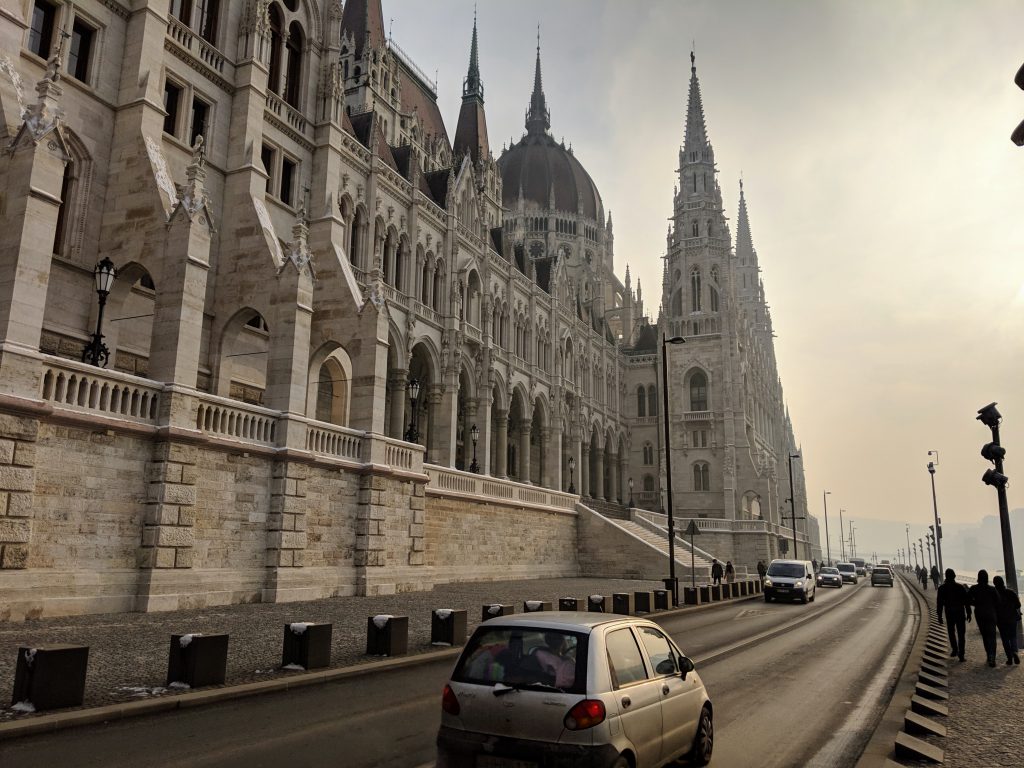
It’s easy to look at Hungary today and lose sight of the fact that just over a century ago it was equal partner in one of the most significant geo-political groupings of the time. Or it’s easy until you visit the Hungarian Parliament – and remember that the Austro-Hungarian Empire was quite a thing in its time.
The Parliament sits on the banks of the Danube and takes up blocks of space between the building and the surrounding square. It was built in the late 1800s and made to sit many more politicians than the country has today in gold-plated splendour. It is a truly impressive building both inside and out.
Apart from the historical significance of Hungary, one detail that really dated the place was the ashtrays outside the Chambers. The politicians were not allowed to smoke in the Chamber so they left their cigars on ashtrays in the corridor, and to avoid arguments each spot was numbered.
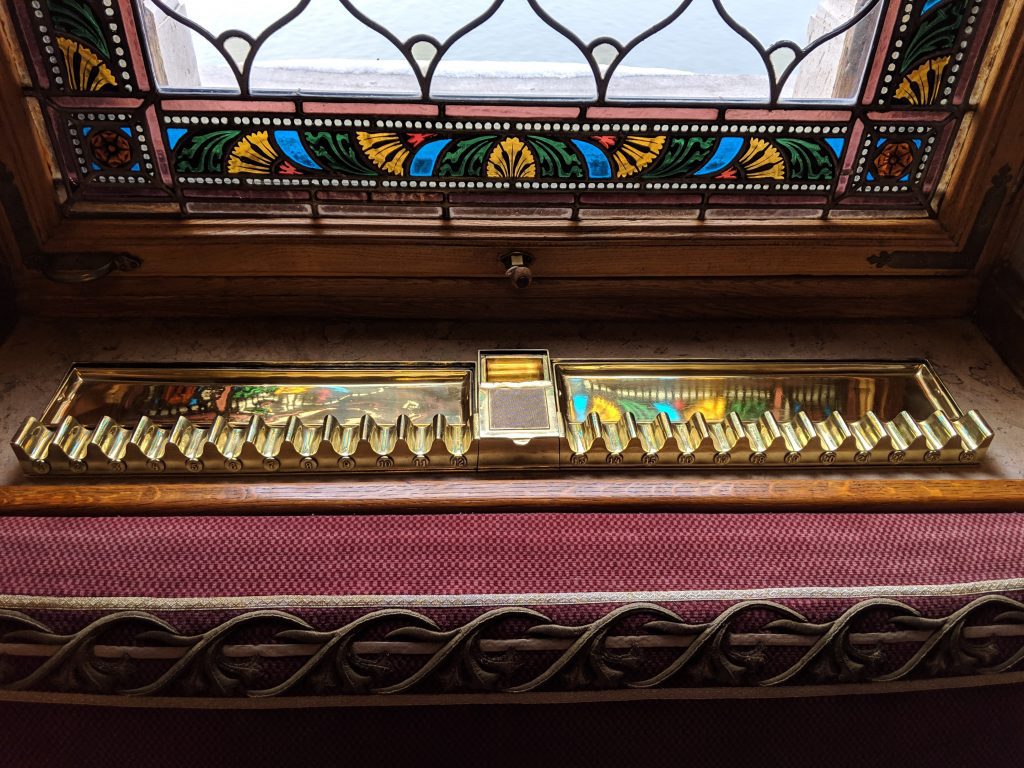
We did a tour of the Parliament and in the gap between getting tickets and starting the tour we indulged in another Hungarian tradition – coffee and cake: Or hot chocolate and cake depending on your age and predilection. Although I somehow don’t think that 100 years ago the pink hot chocolate that Dec chose would have been on the menu.
In the afternoon Jennifer and I visited the Synagogue that stands beside our apartment. It is the second largest in Europe and has a fascinating history. Of course a chunk of that history ranges between sobering and horrifying when you learn that almost one quarter of Budapest’s population was Jewish when the Parliament building was constructed. It was a time when Jews were free to live and work without restriction in Hungary – the first time ever in fact. So for about 30 years the Jews of Hungary flourished; only to be decimated when the right-wing Four Arrows group took power, and then crushed when Germany invaded and put the horrifyingly efficient Adolf Eichmann in charge. Over one third of Auschwitz’s victims came from Hungary.
On a more uplifting note the Synagogue has a wonderful Museum of the Jewish religion explaining the practices and traditions and the thinking behind them. It’s a seriously good display. I’d recommend the Synagogue to anyone.
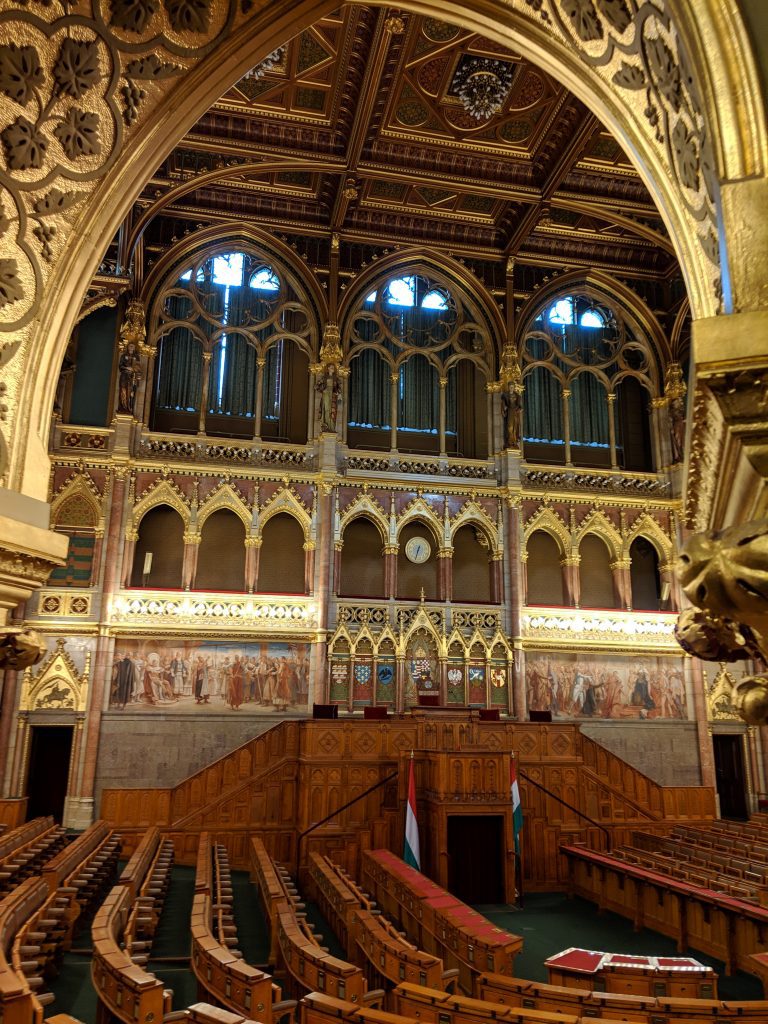
The upper house Chamber. 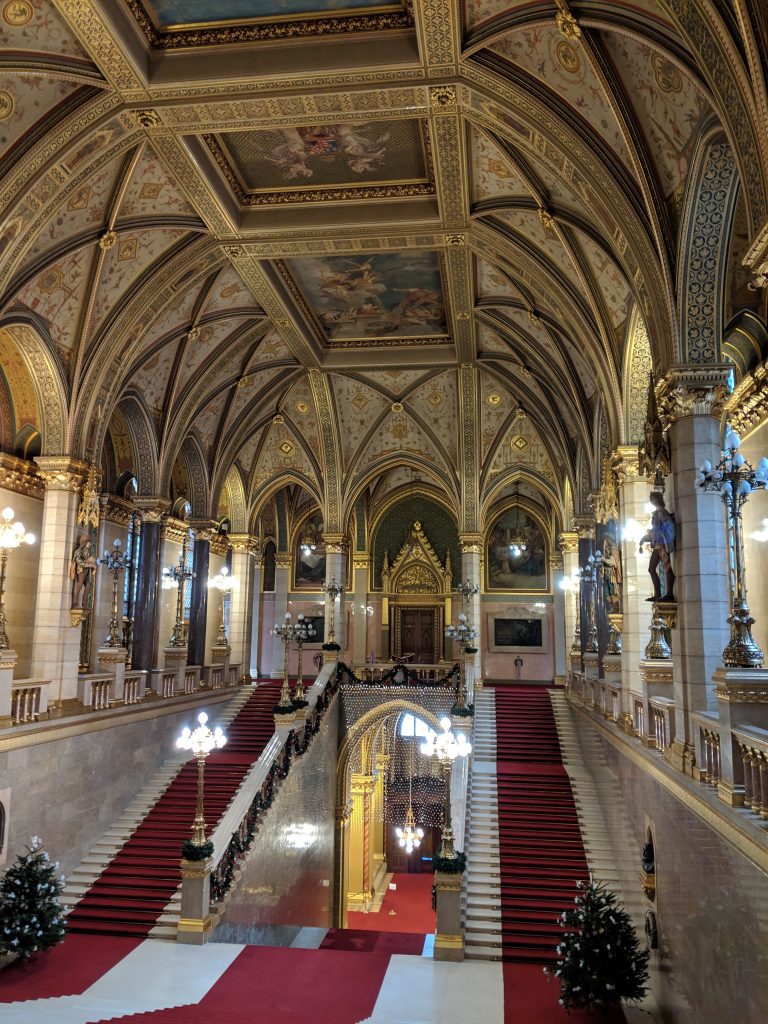
Inside the Parliament. 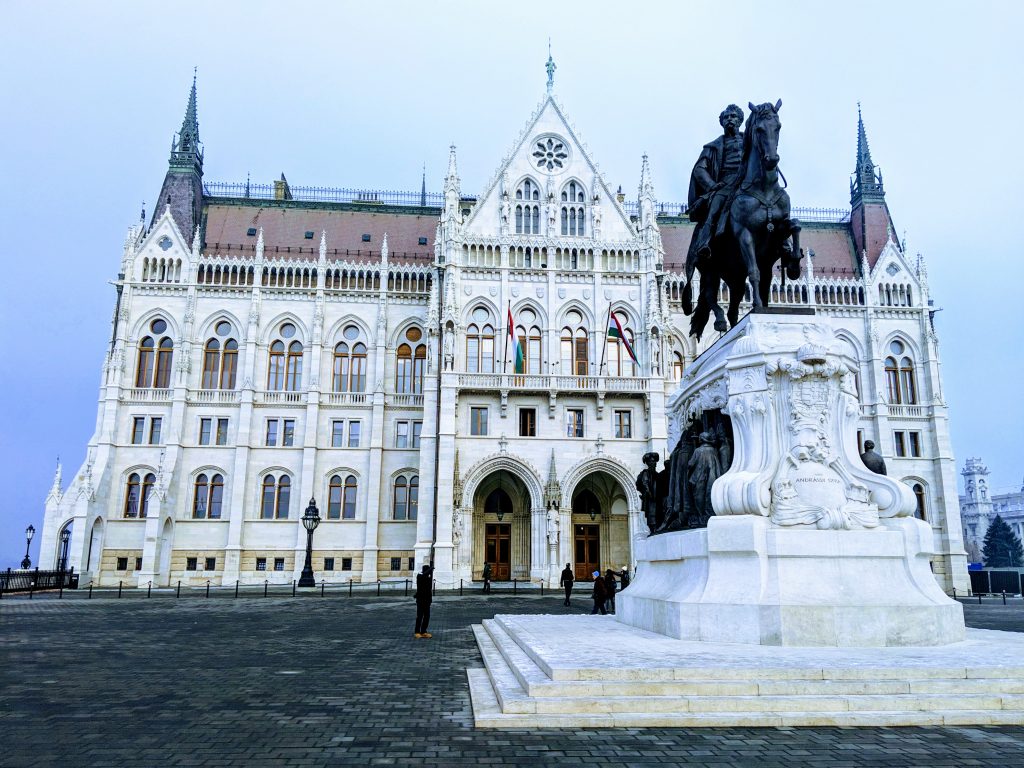
Hungarian Parliament. 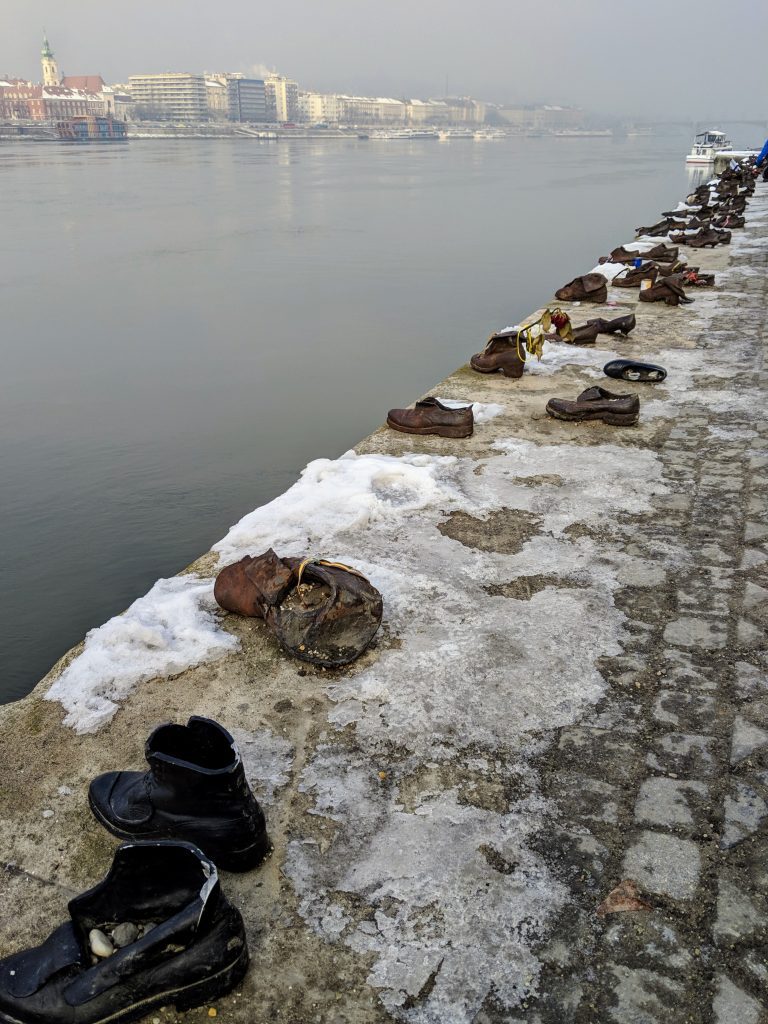
Memorial to Jewish people shot by the Danube. 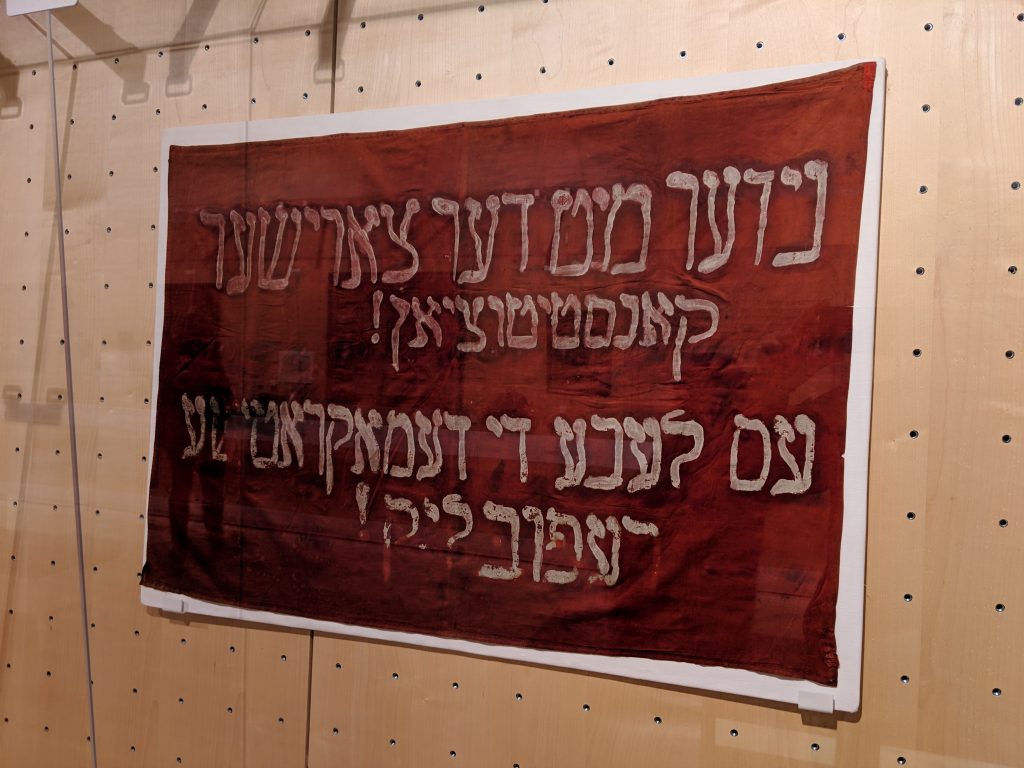
Flag carried at the Russian Revolution (in the Jewish Museum). 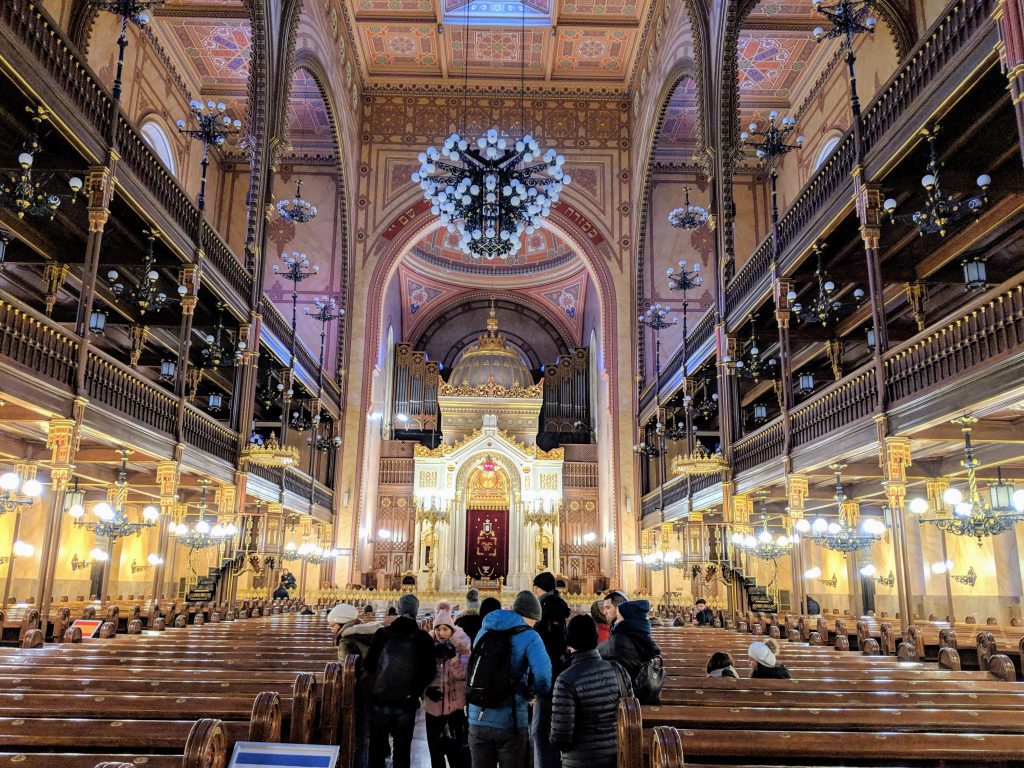
Inside the Synagogue.